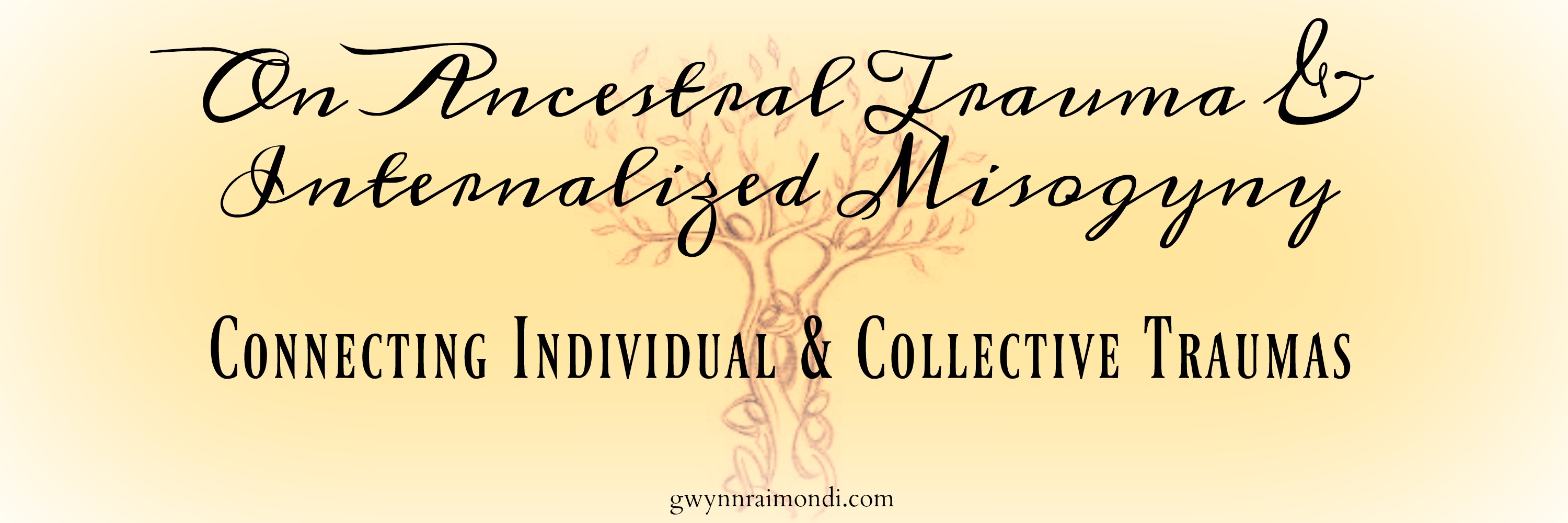No one is innocent in the tide of history. Everyone has kings and slaves in his past. Everyone has saints and sinners. We are not to blame for the actions of our ancestors. We can only try to be the best we can, no matter what our heritage, to strive for a better future for all.
~Diana Peterfreund, Across a Star-Swept Sea
When we look at cycles of trauma, it is important to remember that often there may not have been a choice to not pass the pain forward. Talking about trauma at all is a relatively new development in our human (western) history, and in the early days of recognizing and trying to find ways to process trauma, we only looked at the trauma soldiers experienced and lived with.
It has only been in the last forty to fifty years that we began to acknowledge the trauma that comes with abuse and assault. And it has only been about twenty to thirty years that we began to recognize the impacts things like poverty, being witness to abuse, or living in a family where one or more members had addictions issue has on us.
Add to this that the somatic (body-centered) trauma therapies are also a relatively new thing. It wasn’t until 1997 that Levine’s first book Waking the Tiger introduced the wider public to the ways that trauma lives inside our bodies and how we humans prevent ourselves from processing it. That was only twenty years ago.
The amount of research and acknowledgment around trauma just within my own lifetime (46 years) is amazing. We have come so far since the early 1970s, and I believe we likely still have a long way to go. And I also believe we are getting there.
I share all that to remind us that we couldn’t know what we didn’t know. I don’t know how many times I have heard clients say “I wish I would have started this work earlier/years ago/when I was much younger.” But the truth is that this work, body-centered trauma processing work, is a very new phenomena and likely you actually could not have started this work earlier, because it didn’t exist.
And yet. While it is not our fault that information was not available before it was available, it is our responsibility now to do the work to create change, within ourselves, within our families, and in our greater communities and world.
Breaking cycles of abuse is something that has only been talked about for the last fifty or so years. And then it was only spoken of quietly. Greater social conversations didn’t begin to happen until the 1980s, in part thanks to Alice Miller and her body of work. We didn’t even consider that beating children would or could have long term, life-long, impacts on them. And it wasn’t until the Adverse Childhood Experiences study (ACEs) which was initiated in 1995 but then not really talked about until twenty years later, that we knew those impacts were beyond psychological and spilled into our actual physical health.
And even so, I know my maternal grandfather talked about his abusive step-mother and how he swore he would never treat his child the way she treated him (now I have no idea if he actually kept this promise to himself, but evidence says he probably did).
So, even though the greater social conversation was not there, I do believe we have within us the “moral” (for lack of a better word) compass to know abuse, domination, authoritarianism, and othering are not right, okay, or humane (or for that matter actually human).
We are in the infancy of truly understanding how the traumatic experiences of our ancestors are passed down to future generations. We are in the infancy of learning how to examine and process these traumas – especially the ones we don’t actually know about. There is still so much that is unknown, and frankly there is so much that cannot be known for several more decades as studies continue to watch families move through more and more generations.
And.
Even with this being true, I believe we all know deep within ourselves that the past impacts us. Historical past, ancestral past, and our own lived experience past. We may not have all the data and research to back this up (yet), and still we know.
And this is where our own responsibility comes in. It is not our fault what was done to us or our ancestors. It is absolutely our responsibility to make the change within ourselves so that change out in the world can occur, so we can end the cycles of abuse, oppression, and domination.
So we can all find our ways to freedom.
So we can all be a part of creating a world where all of us are free.
I believe part of that work is for us to look at our ancestral, historical, and personal pasts and to unearth what we have internalized; to examine it; to unlearn what we know is not right or just; and to create space for change and doing different for ourselves and for the world moving into our futures.
I talk more about all of this in the 10-minute video below:
This essay is the fourth and final in a four part series I have written exploring ancestral, inter-generational, historical and cultural relational trauma and internalized misogyny. I hope you found the series helpful and informative.
This essay series is also to introduce the themes we will be exploring in the spring circle I facilitate: Unleashing Ourselves: Processing Ancestral Trauma & Dislodging Internalized Misogyny. We begin April 1. You can learn more here.
To read the other essays in the series, go to the links below
Defining Ancestral & Intergenerational Traumas and Internalized Misogyny
Connecting Individual and Collective Traumas
Ending Cycles :: Processing the Past & Changing the Future (this essay)
The importance of processing Ancestral Trauma & Dislodging Internalized Misogyny


